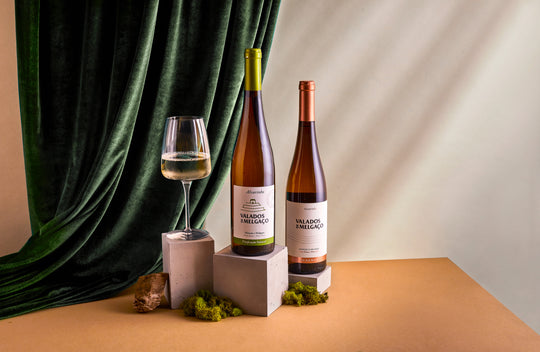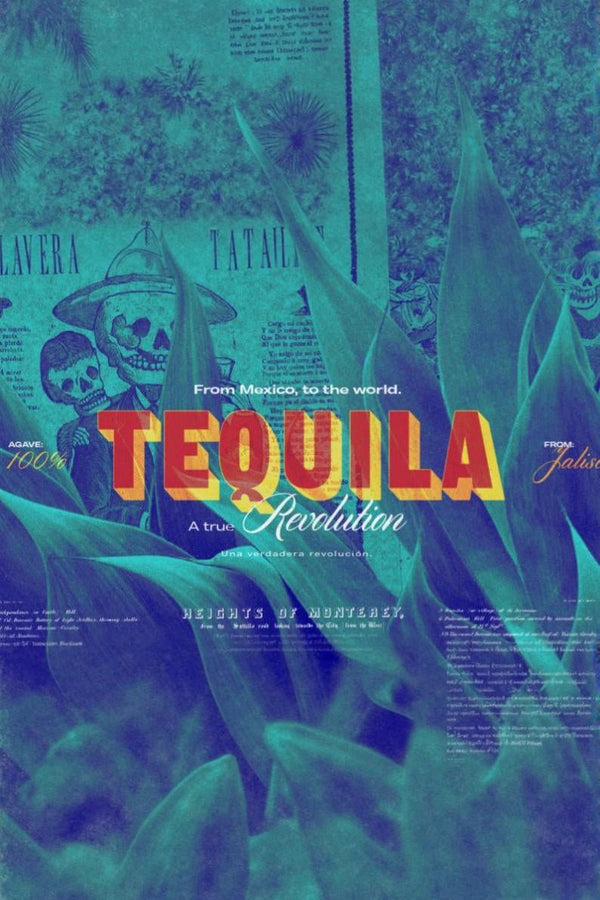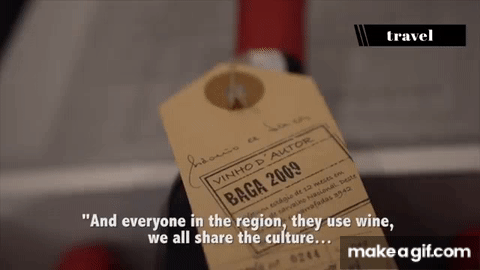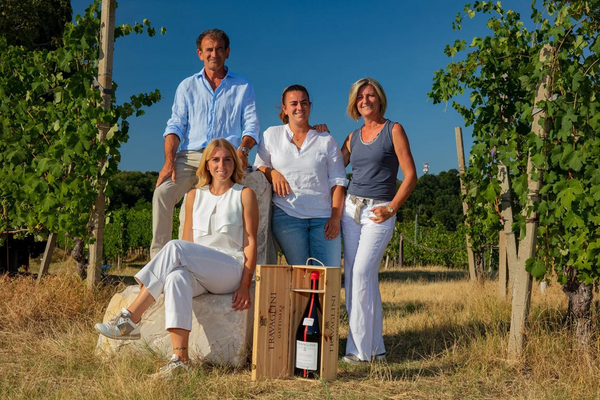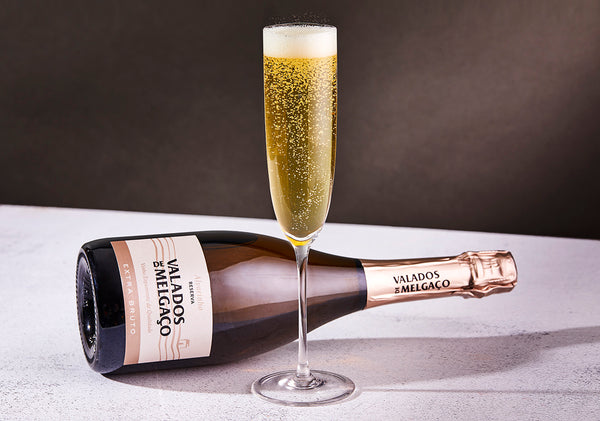Portugal, a Wine Lover’s Guide

Portugal, a wine’s lover guide
Chardonnay, sauvignon blanc, pinot noir, merlot, cabernet sauvignon, riesling, malbec, barbera, Nebbiolo, sangiovese, pinot grigio.
Those names instantly conjure images of vineyards in Italy, France and Spain.
But have you ever heard of alvarinho, verdelho, malvasia, alicante, tinta roriz or touriga nacional?
Those names may be lost on many, but these Portuguese grape varieties produce some wines just as full, flamboyant and bright as their more well-known counterparts.
And just like its more famous European neighbors, Portugal has a long history of wine making and an endless varietal of wine grapes with enough distinctive personalities to satisfy the most demanding wine lovers. The different regions of this small nation that welcomes Western travelers as they head into continental Europe grow characteristically different grapes that produce singular wines, each uniquely suited to different palates.
There are so many varieties, you’re bound to find something to say, obrigado! (Thanks).
A variety of locales, and grapes
Portuguese “vinho” trade was fomented by the Romans when they reached Lusitania in the mid-2nd century B.C., but archeological finds date wine consumption in the Iberian Peninsula to around 7th and 6th century B.C. with production following in the 5th to 4th century.
Bordered by Spain on one side and the Atlantic Ocean on the other, Portugal measures just about 35,465 square miles, about the same size as Maine or Montana. And a good portion of it is devoted to grapes, since the country has the ninth largest vineyard area in the world in comparison to the United States, which ranks sixth.
It is also the ninth largest wine exporter in the world, most of it still, dry Madeira and Port that account for 75 percent; the rest are fortified wines.
One of the oldest nations in Europe having established its continental frontier in 1297, Portugal’s geography is marked by a mountainous and hilly northern region with cool weather where most of the vineyards are located. Some of the subregions or DOC´s found in this area include Vinhos Verdes and Minho, Trás-os-Montes, Douro, Dão, Bairrada and Beira Interior.
The southern part marked by the Lisboa, Tejo, Peninsúla de Setúbal, Alentejo and Algarve Region features plains and a drier, warmer weather.
It is this variety of locales that allow Portugal to house some 250 indigenous grape varieties, the highest density in any country (even more than Italy).
Savoring all of them and learning about the regions where they’re grown, how to pronounce them and how to pair them might be a daunting task. One way to simplify this is to learn what family of grapes and wine varietals they are similar to.
Something else that helps is to focus on the 34 varietals most planted, 18 of which are
red and 16 of which are white. Below is a list of twelve of these grapes and the wines you are most likely to find in wine stores you shop at or at restaurants and wine bars you frequent. Now you can add a few more impressive wine facts to your repertoire of sipping tidbits and hopefully introduce your palate to something new.
VINHO BRANCO (WHITE WINE)
Alvarinho (Ahl-Vah-Reen-Yoh)
Alvarinho is a grape planted in the regions of Vinhos Verdes, Alentejo, Dão, Setúbal and Lisbon. It is a wine that tends to be shy in alcohol and high in acidity. It’s typically an un-oaked wine and has notes of honeysuckle, peach, lemon, grapefruit, apple, green pineapple and minerals. Over time, as the wine ages, it will develop notes of honey.
The world is already smitten with Albariño from Spain, just over the border, but the Albariño grape is also native to Portugal, where it’s called Alvarinho. While Portuguese wine producers have historically preferred to blend grapes, Alvarinho was the exception that led to the single-varietal boom currently underway, particularly in subregions of Monção and Melgaço.
From the northernmost part of Portugal, in Vinho Verde territory, Alvarinho is typically defined by peach, citrus, and blossom aromas, with a spritzy finish. Although the spritzy style of Vinho Verde is better known, dozens of producers are making wines from Vinho Verde that have no effervescence, are more complex, and have aging potential.
Vinho Verde is the largest DOC in Portugal, so there are lots of variables within it. Alvarinho is considered to be the top grape of Vinho Verde, and it makes a very fine wine, very aromatic and beautiful.
Other Vinho Verde grapes gaining attention include Avesso, Arinto, and Loureiro.
A good pairing for Alvarinho is white fish and meats, and green herbs.
You will like Alvarinho if you like: albariño, pinot grigio or dry riesling.
Arinto dos Açores (Ah-RIHN-Toh)
Arinto is grown in Açores and is also one of the grapes found in the blend of Vinho Verde wines. It produces a delicate wine with acidity and has the capacity to age. On its own, the wine has notes of lemon, green apple, lime, citrus blossom, stones and verbena.
Not to be confused with Arinto (a commonly planted white grape on mainland Portugal that’s typically used as a backbone for white blends because of its high acidity), Arinto dos Açores is a variety native to the volcanic Azores Islands, an archipelago of nine islands located in the north Atlantic ocean, about two hours from Europe and 5 from North America.
These bush-trained vines grown on the black basalt soils are just meters from the Atlantic Coast, and the wines made from them reflect their terroir.
While Arinto from the mainland is also known for its acid and longevity, Arinto dos Açores is a ‘salt bomb’ from the middle of the Atlantic.
Portugal has so many exciting things happening right now, including these wines from the Azores that are crisp, mineral-driven, and salty.
A good partner for arinto are oysters, seafood and salads.
You will enjoy Arinto if you like: dry riesling, pinot grigio or pinot blanc.
Bical (BEE-cal)
Bical is found in the regions of Bairrada, Dão, Douro and Tavora Varosa. Vines of this variety respond well to wood maturation, especially with prolonged less contact.
It is an aromatic wine that grows best on calcareous soils and is often blended with Arinto in various regional sparkling wines. It is soft, fresh and well-structured and has notes of cantaloupe, peach, light tropical fruits, citron, cherimoya, golden apple and unripe apricot. This is a grape that can handle time in oak.
Enjoy Bical with spiced and roasted meats, grilled white fish.
You will be pleased with Bical if you like: dry riesling, ripe gruner veltiner or ripe albariño.
Gouveio (Goo-VAY-oh)
Gouveio is grown in the Douro and Trás-os-Montes regions and is a wine with low alcohol and high acidity sometimes used to produce dry wines and as an ingredient in White Port. It ages well in a bottle and for years it was known as Verdelho in the Douro region, which led to much confusion.
The wines are fresh and lively with notes of peaches, tangerines, yellow apple, stony minerality, anise, celery root and tarragon.
Have Gouveio with salted cod or salmon.
You will favor Gouveio if you like: marsanne, Semillon or grenache blanc.
Malvasia Fina (Mahl-va-Zeya Fee-nuh)
Malvasia Fina is grown in northern inland Portugal, especially in the Douro, Dão and Beira Interior, as well as in the Tavora-Varosa, Lisbon and Madeira (where it is called Boal). A subtle wine, it is not intense, reasonably fresh and often used in blends, including sparkling wines. On the nose, you will find green banana, jicama, white fig, beeswax, light molasses and meyer lemon zest.
A good pairing for Malvasia Fina is grilled fish, shellfish or braised rabbit.
You will relish malvasia fina if you like: semillon, roussanne, or pinot blanc.
Verdelho dos Açores (Ver-DEL-yo)
Verdelho is found in Madeira, Azores DOC (verdelho from madeira and açores it´s a different grape from the continental, here it´s the same grape as Gouveio). It is a great wine for fortification and can range from dry to off-dry. It will have aromas of fresh peaches, tangerine and herbal notes.
Known as the “grape of kings” Verdelho was a favorite of European royalty in the 17th and 18th century and all the way into the 20th century. After the 1917 Russian Revolution, several bottles of the win were found in the Tsar’s cellars.
It can be paired with oysters, smoked ham or green salads.
You will enjoy Verdelho if you like: verdejo, ripe sauvignon blanc, vernaccia, fortified vin jaune or sherry.
Encruzado (En-Kru-Zah-Doh)
The belle of the Dão, Encruzado is the most prized white variety in the region. Known for its floral, mineral, and light citrus aromas, it makes balanced white wines that retain acidity and finesse along with a structure that has the potential for bottle aging. Encruzado is a very interesting grape because you can drink it within a production year, but we can also age it for over 15 plus years and let it develop very unique aromatic notes and complexity. The characteristics of the Encruzado from the Dão, can be easily compared to a white Burgundy or Rhône. These wines combine bright fruit, minerality, and a very unique texture.
Pork stew and risotto go well with Encruzado.
You will be pleased with Encruzado if you like: ripe white burgundy, vermentino
Fernão Pires (Fer-Now Peer-esh)
Portugal’s most planted white variety is spread throughout the country’s wine regions, accounting for some 13,000 hectares. The vine is especially susceptible to frost and is not suitable in cooler areas.
The most notable regions for Fernão Pires are the warmer and hot climates of central and southern Portugal, particularly Tejo, Lisboa, and Bairrada (where the variety is called Maria Gomes).
Intensely aromatic, this white wine has floral and citrus notes and can be found as a monovarietal, in blends, as a sweet wine, and as a sparkling wine.
The vine is especially susceptible to frost and is not suitable in cooler areas.
Sushi and barbecue chicken are good pairings for Fernão Pires.
Enjoy Fernão Pires if you like Viognier, Rousanne or Torrontés
VINHO TINTO (RED WINE)
Alicante Bouschet (Ah-Lee-CAN-tay Boo-SHAY)
Alicante Bouschet is grown in Alentejo, a region that covers two-thirds of Portugal. The wine is a full bodied dry red wine with a lot of tannin and grip. It has aromas of blackberry, black cherry, blueberry, red/black plum, red/black currant, bitter, chocolate, smoke, carob, coffee, leather and pepper.
A good pairing for Alicante is the strong flavor of barbecue, teriyaki and carne asada.
You will enjoy Alicante Bouschet if you like: petite sirah, sangiovese grosso or zinfandel field blends.
Baga (BAH-guh)
Baga is grown primarily in Bairrada and Dão. The wines have aromas of red cherry, red/black plum, tobacco and coffee bean. The wine has a deep color, good structure, lots of acidity and powerful tannins.
Mostly associated with the Bairrada DOC, Baga is a red grape that can be a challenge in the vineyard; its thick, tannic skin and naturally high yield can make phenolic ripeness difficult to achieve in cooler, wetter years. When managed correctly, though, Baga can produce appetizing lean and tannic wines with racy acidity and high-toned berry notes as well as coffee and tobacco aromas. Lighter wines from Bairrada are really a gem if you know where to find them. They are unique, savory, and food-friendly wines. Fatty, spiced and roasted meats go well with Baga.
You will favor baga if you like: nebbiolo (from Piedmont, Italy), pinot noir or xinomavro (from Naoussa, Greece).
Castelão (Kass-tell-Ownh)
Castelao is grown in the regions of Setúbal, Alentejo, Tejo and Lisbon. A versatile and highly adaptable wine, Castelao is popular with winegrowers because off its hardiness, as the vine thrives just as well in arid climates as cooler, more humid areas.
It produces a rustic wine with notes of raspberry, red currant, cherry, blue floral, caper berry, cedar, game and tea leaf. It is a wine with texture and acidity without hard tannins. As it ages, the aromas evolve into cedar and cigar-box notes.
A good pairing for Castelao is chicken tacos and bean soup.
Enjoy Castelao if you like: grenache blends, ripe cabernet franc or tempranillo/grenache blends.
Sousão (Suz-AOHN)
Sousão is grown in Vinho Verde (locally known as Vinhão), Douro and Lisbon. This grape is also grown across the border in the region of Galicia, Spain, and is often used in the production of table wines.
It is a highly structured wine with very dark color due to the grape’s deeply pigmented skin color. This wine has notes of red/black cherry, tart plum, cola, rosemary, thyme and anise seed.
Enjoy Sousão with grilled sardines or a steak sandwich with caramelized onion.
You will relish Sousão if you like: barbera (from Piedmont, Italy), xinomavro (from Naoussa, Greece) and baga.
Tinta Roriz (TEEN-tah-ROAR-eez)
Tinta roriz is grown in the Douro, Dão and Alentejo, where it is called Aragones (Tempranillo to the Spanish). The grape can be highly aromatic and elegant, blending well with other grape varieties. It tends to be blended with other varieties, typically Touriga Nacional and Touriga Franca, and also with Trincadeira and Alicante Bouschet in the Alentejo. The nose is a potpourri of aromas, including ripe strawberry, plum, mulberry, herbs, fennel, leather, black pepper, licorice, tobacco, toast, vanilla and smoke.
Generally paired with lamb, Tinta Roriz can also go well with red meats, sausage and suckling pig.
You will enjoy Tinta Roriz if you like: sangiovese or Rioja-style wines.
Touriga Franca and Touriga Nacional (Too-REE-gah Fron-Kah, Too-REE-gah Nass-eyo-nal)
These two red grapes are major players in port production; today, however, they’re becoming the darlings of Douro and Dão red wines. Touriga Franca is Portugal’s second most planted variety, claiming over 15,000 hectares of vines, and Touriga Nacional is in fifth place, with 12,000 hectares and counting.
Touriga Nacional is seeing an upswing in plantings—not only is it considered the finest of port grapes, but it has great winemaking potential. Dark, perfumed, and characterized by high tannin and fruit concentration, Touriga Nacional is a structured and powerful wine. Touriga Franca is the fleshier variety (often compared as Cabernet Franc to Touriga Nacional’s Cabernet Sauvignon). The other important port grape often found in modern Douro blends is Tinta Roriz (also known as Tempranillo), which accounts for the lion’s share of Portuguese plantings, with 18,000 hectares.
Touriga Nacional is grown in the Douro, Dão, Bairrada, Alentejo and Tejo. The grape, which loves the heat, is Portugal’s most planted variety. It produces a complex wine with aromas of rose, violets, licorice, ripe black fig, black currants, berries, black plum, black red and raspberries, pine, eucalyptus, bergamot, rosemary, violets, licorice and bitter chocolate.
The “New Douro” has a dozen or so non-interventionist winemakers offering Douro 3.0. Douro has produced port wine for 300 years, but now is the time for terroir-ists—young winemakers to bring innovation to this old DOC and its 45,000 hectares.
You can pair it with grilled meat and game.
Enjoy touriga nacional if you like: cabernet blends, petite sirah or full bodied syrah/shiraz
Ramisco (Rah-Mees-ko)
Ramisco, of which there are only 20 hectares left in the world, comes from a remarkable terroir and may be suited strictly for wine geeks. Vines are grown in chalky clay trenches dug into the sandy soils of Colares on the coast of Lisbon, where old vines remain on their own pre-phylloxera rootstock.
Ramisco wines tend to be aged in bottle for many years because of their high acidity and ferocious tannins, and they’re renowned for achieving finesse after a decade in bottle.
A good pairing is suckling pig or roasted pork.
When it’s all said and done, wine is meant to be explored and enjoyed and hopefully this A-Z guide of the grapes of Portugal will be a handy reference inspiring you – and your palate – to keep an eye out for Portuguese wines.
Please watch our videos below!
Saúde!
Quinta dela Rosa Porto from Birdie on Vimeo.
